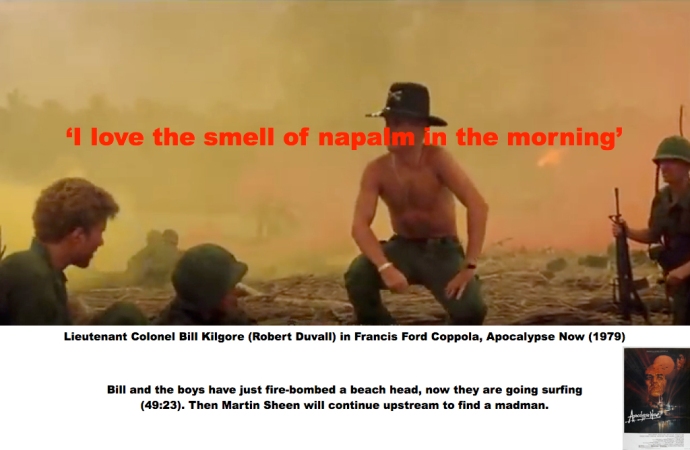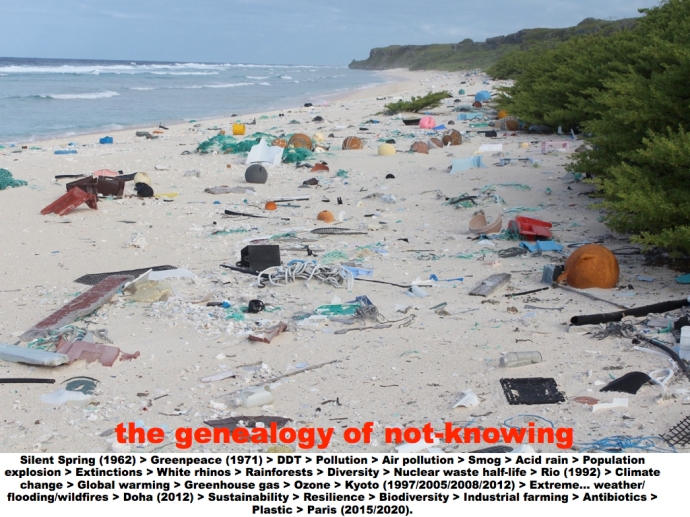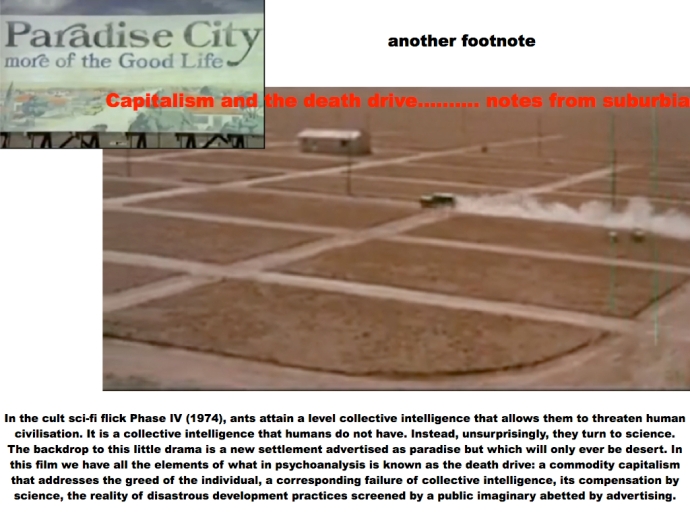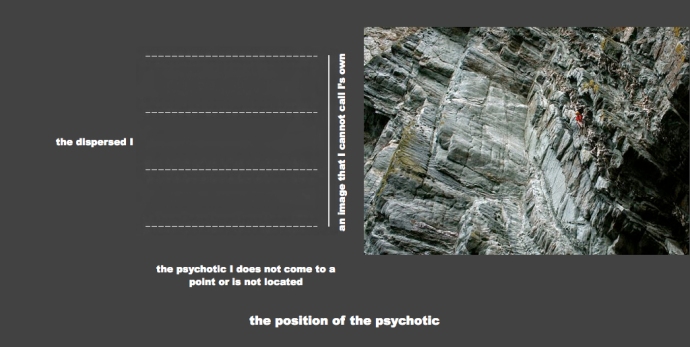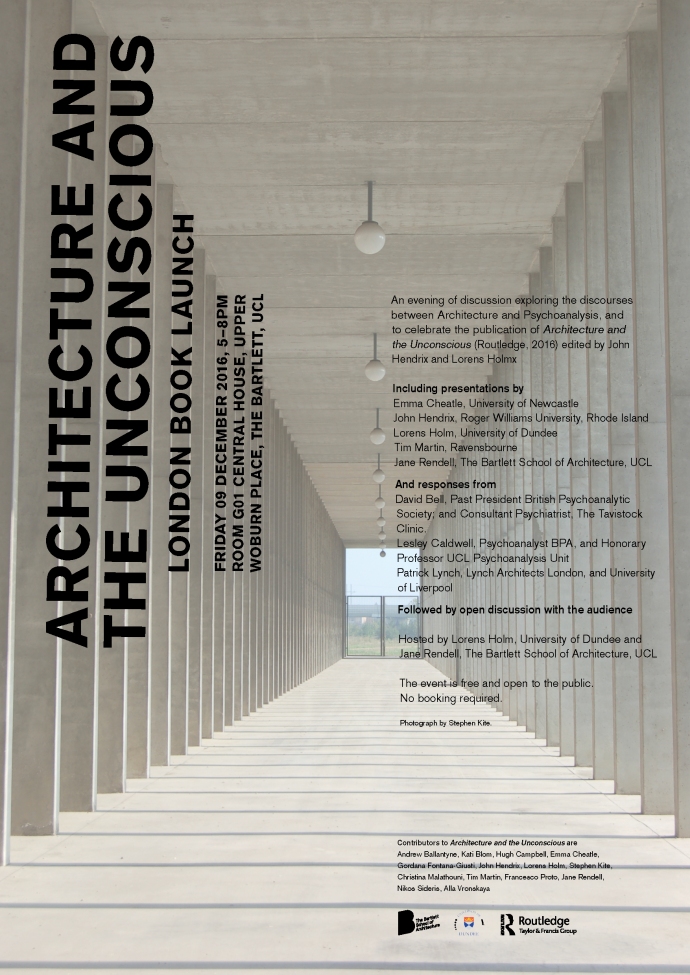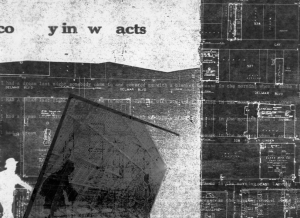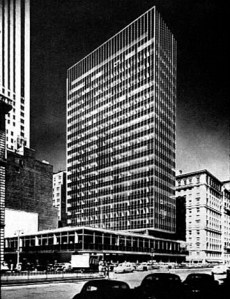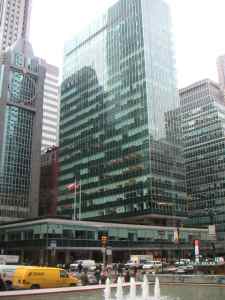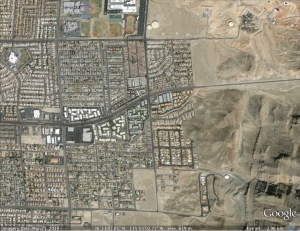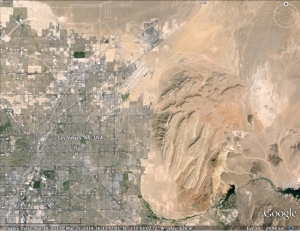An obvious model for understanding the self-destructive behaviour we are inflicting upon ourselves by damaging our environment is the death drive. The psychoanalytic theory of the drive has been invoked, in the past, outside the narrowly defined domain of psychoanalysis, to understand cultural productions like the Chapman Brothers’ Disaster of War (Tate 1993), Hell (White Cube 1992), and Fucking Hell (White Cube 1999). We need to understand that climate damage is a cultural production, it is a form of process art. It is a product of our culture alongside our other arts and our most hallowed institutions. It is the product of our enduring work (collective) and our daily labour (individual). It produces things that have a life span and that take up space. They can be displayed as objects of contemplation the way we display artwork. I am thinking of soya bean fields where there once had been rainforests, thousands of one ton blocks of carbon per year stacked in the desert like Judd Boxes, floating islands of plastic in the Pacific, sky charts decorated with ozone holes, the pantheon of extinct animals arranged in Cornell Boxes. These are the products of our culture that constitute our civilisation as much as are our artworks. It is of no consequence to their status as cultural productions that they were not commissioned by the Popes of Rome [think: the Sistine Ceiling]. Climate change lies in the space beyond the moral and ethical codes that we construct collectively; it abandons itself to the pure self-abasing pleasure of pain. Only, unlike the work of the Chapmans, no glass box contains climate change and the destruction it inflicts upon our bodies and minds, there is no formal argument, no Reiner de Graafian box [see Architectural Review October 2017], no Miesian refinement and civility. Only stuff everywhere.
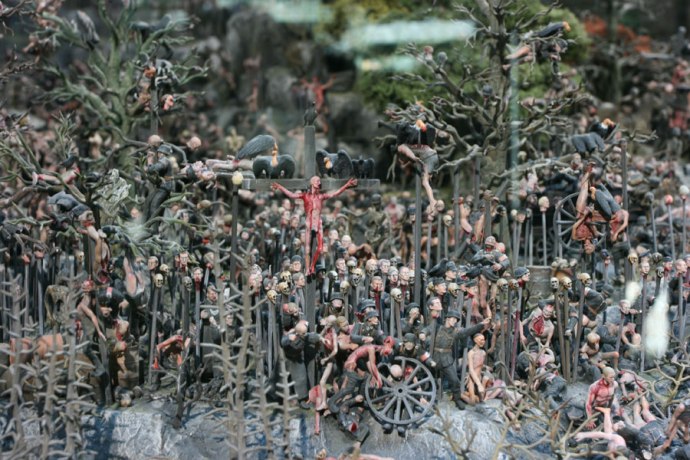 [Jake and Dinos Chapman, Fucking Hell in a glass box, taken from CultNation Tuesday 03 October 2017]
[Jake and Dinos Chapman, Fucking Hell in a glass box, taken from CultNation Tuesday 03 October 2017]
In Freud’s oppositional thought, for which see Beyond the pleasure principle (1920) , the drive is presented as a dialectic between eros and thanatos, love and death, which puts the forces of love life and creation in opposition to the forces of death and destruction. In Civilisation and its Discontents (1930), Freud puts forward another reading of the drive as a dialectic between individual and civilisation > civilisation which is the locus of the collective in all its forms – life creativity construction particularity and universality – versus the individual which is the locus of a form of repetition that undoes all that is civilisation and all that it stands for. Our moral and ethical codes are collective constructions of civilisation. This distinction between individual collective is not unrelated to Arendt’s distinction, in The Human Condition (1958), between labour and work [labour is what is consumed by daily life and work produces the surplus that constitutes a civilisation, a distinction that comes ultimately from Marx’s idea of the surplus that produces capital]. The psychoanalytic theory of the drive, provides a model for thinking our complicity in environmental damage and the related issue of the relation of individual to collective. In a nutshell, it is the rampant success of the individual and the failure of the collective.
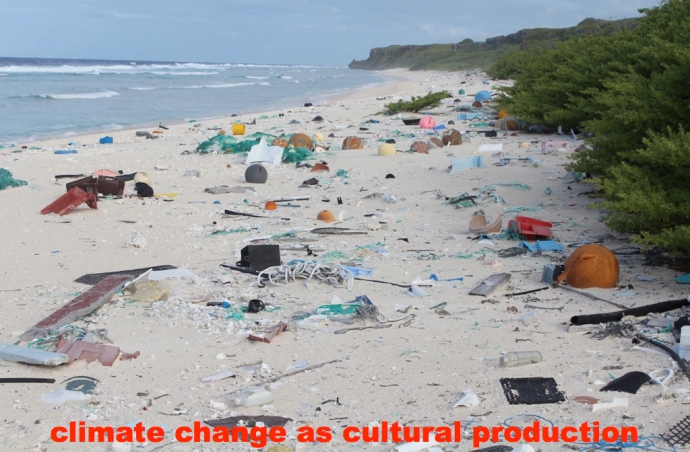
[Image from Jennifer Lavers (University of Tasmania and RSPB, 2016) of a curated beach taken from The Guardian Sunday 01 October 2017]
The theory of the drive goes something like this. In Civilisation and its Discontents (1930), Freud argues that civilisation imposes a framework upon subjects that reins in their wilder impulses. In Vitruvius, this is, in effect, the dispersed state of man before he discovers architecture, each person an independent solipsist. Without the civilisation that draws us together and frustrates our baser wandersome drives, we would spend our whole time fighting and fucking. He contrasts the collective condition of civilisation with the drives of the individual which are inherently destructive of civilisation. Civilisation… may help us to understand the different roles of the individual and the collective in climate damage. Let us make a wager, let us contrast individual greed vs collective good. The theory of the drive thus bridges the gap between the person and the group and helps us understand it. Neoliberal thinking exploits this difference, focusing on the individual and treating each one of us as a commodity (human capital) and an entrepreneur (cost centre, agent of more commodities). Commodity capitalism solicits our greed, it addresses each human at the level of the individual, with a product.
[Note: The treatment of the drive in the terms of individual/collective takes it into the territory of political theory. In his book, A Grammar of the Multitude (2004) Paolo Virno delineates multitude from public. The multitude is the figure of the many in political discourse. Frank Lloyd Wright called it mob and mobocracy. We distinguish the collective from the multitude because the collective is an entity, a form of totality, that has not relinquished its many-ness. It is the multitude that is bound by the inter-subjective network of social forms and relations without becoming the imaginary unity referred by politicians as the public as in that scapegoat mantra the public has spoken.]
In Beyond the Pleasure Principle (1920), Freud argues that the drive is a dialectic between eros and thanatos, love and death, which puts the psychical forces of love life and creation in opposition to the forces of death dispersal and destruction. The opposing drives toward love and death, pleasure and pain, construction and destruction, inhabit all people, and exist in an oppositional form that does not lead to any form of synthesis (Hegelian or otherwise). It may help us to understand that construction and destruction are inherent to each other, to understand the opposition, in other words, as a form of co-habitation. The economist and political scientist, Joseph Schumpeter described the process of capitalism as a form of creative destruction (Schumpeter’s gale).
In ‘The Drives and Their Vicissitudes’ (1915) [translated by Strachey as ‘The Instincts and their Vicissitudes’, which conflates Freud’s distinction between animal instinct which is biological and drive which is cultural], Freud describes the drive as a repetitive process that inheres in each person at the level of the individual psychical organism. It underlies all our shared symbolic activity [Lacan’s category], chief among which is language, but which includes all the arts, the social political and economic ceremonies and institutions that organise collective life. Freud describes the drive as a stimulus response mechanism that resides at the threshold between the body and the mind. It has 4 components: object, aim, thrust, and site. The sites are on the body [erogenous zones].
In The Four Fundamental Concepts of Psychoanalysis (1964) Lacan makes clear – contra Strachey – that the drive is a symbolic entity with no basis in biology. The drive resides in the language and the spiritual life of humans, not in their bodies. He argues that the drive is a montage of elements (Freud’s 4 components), there is no biological necessity for the fact that they conjoin, they simply do as a matter of reason. He argues that all drives are death drives, all drives lead to death because it is the property of language, through which the drives work, to replace the object. We use language because the object is absent. Language – with is what humans do – is corrosive, the flow of signifiers that constitute language will wear down the world and crowd out reality.
Why is it significant to invoke the death drive in respect to climate change? Why is it not intellectual navel gazing and point scoring by theorists who have nothing better to do than spread doom and gloom in lefty newspapers by re-frying obscure idea systems? Firstly, psychoanalysis is pitilessly evidenced based. It may have a difficult relation to science because it follows a linguistic or semantic logic (a logical logic) rather than a cause-and-effect logic, but psychoanalytic theory is the condensation of countless hours of observation of what individuals say about themselves and what civilisation says about itself through its collective myths and productions. To poach a term from the social sciences, it is ground up theory (ground up or groundup?). To relate environmental damage to the death drive is to say that environmental damage in its myriad forms maps onto a universal template for what it is to be human. It is to be human to wrestle with constructive and destructive pressures, to be constituted of these oppositional impulses. In the terms of the death drive, it is to be human to be individual. It is to be individual to regard civilisation-building as arduous and difficult to sustain when what we would really rather do tonight is what we did last night, flub out in front of the telly. It is to be individual to want, despite our better selves (our collective selves) to want Bexit and Trump. Psychoanalysis is a rigorously empirical discipline and it may provide the narratives to help us understand our existential predicament. It may help us to humanise our selves in this predicament.
I put psychoanalysis forward as an example of myth-making, although it may not be the best/only example. The old language of psychoanalysis – the language that comes from Freudian analysis – is a resolutely humanist and non-instrumental narrative. In this regard, it finds a companion in the old language of architecture, as the form of humanism. It is pitted against the forms and languages of contemporary deregulated capitalism, which is so much chatter of a voracious expansionist narcissistic ego that sees itself reflected everywhere in the world and knows not its inside.
Impact
If this work has value, it is because it will help us think anew and in different ways about the existential problems confronting us. Understanding is the key to change. Avoidance is the key to repeating the same pathologies over and over again. Classical Psychoanalysis, like classical Greek Tragedy, has given us great narratives to live and die by. We need new narratives because we need narratives that correspond to the truth of our time. We need narratives that help us to recognise and understand the bad times that we live in, so that we stop playing the language game of avoidance and denial. The narratives of progress, and in particular, the upbeat spin placed upon that narrative by the neo-liberal marketing culture that talks about everything as if it were the latest best product and that seems to have permeated almost every aspect of collective life from education to health care, have had their go and failed. If the future is so bright, why do I hurt so bad? If you greet me with a smile and a hand shake, why do I feel a knife in my kidneys? If my student experience is so important, then why am I treated as if I were a commodity? There is nothing worse than living in an environment where the narrative does not match the reality we experience. The Scottish psychoanalyst R.D. Laing reckoned it was the families with counter-truth narratives that produced psychotic children. There is nothing worse for our individual and collective health and well-being than a narrative that does not give us the linguistic tools for unpacking the condition we live in.
